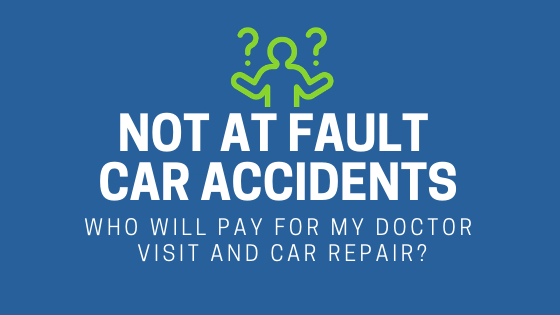Who Will Pay for My Doctor Visit and Car Repair if I was not at Fault?

Why You Should Hire Personal Injury Attorney After A Car Accident
January 7, 2019
How to Find the Best Chiropractor
February 7, 2019Car Accident Not at Fault – Who Will Pay for My Doctor Visit and Car Repair?
There are about a dozen states in the United States that follow a “no-fault” automobile insurance system – New York, New Jersey, District of Columbia, Massachusetts, Minnesota, Michigan, Pennsylvania, Florida, North Dakota, Kentucky, Kansas, Utah and Hawaii. There are different rules in every no-fault state. There are even a few that are known as “choice” no-fault states – New Jersey, Kentucky and Pennsylvania. In these states, car owners essentially have the choice of not opting for the no-fault system when they purchase an automobile insurance policy.
What is a No-Fault Insurance Claim?
No-fault insurance means that your own car insurance provider will pay some or all your medical bills and lost income if you are involved in an automobile accident, regardless of who was legally at fault. Typically, a no-fault claim is made through an auto insurance policy’s “personal injury protection”, or PIP, provisions. This is a mandatory coverage in no-fault states.
Also known as a PIP claim or Personal Injury Protection claim, a no-fault insurance claim is one that you make with your own car insurance company, instead of the other driver’s insurer, — for payment of medical bills, lost income, and certain other out-of-pocket damages that you incur after an auto accident. If you live in a no-fault state and are injured in a car crash caused by another driver’s negligence, submitting an insurance claim is a much more streamlined procedure than it is in states where are more traditional fault-based insurance system is followed.
Submitting a no-fault insurance claim is a lot more direct and efficient in many ways. When you submit this type of claim, you do not have to worry about whether your claim will be denied by the insurance company because of any dispute about who or what caused the accident. There is no burden on you to prove to the other insurance provider that the other driver, and not you, were at fault for the accident.
Damages You Can Receive in a No-Fault Insurance Claim
As mentioned earlier, each of the states that follow the no-fault insurance system has its own variations of the system. Some follow a “choice no-fault” system, which means that you have the choice to be insured under the no-fault system or the traditional liability-based one. Additionally, each no-fault insurance state has different rules regarding the type of damages that you can pursue in a no-fault insurance claim.
Although most states allow you to file a claim for medical expenses and lost income, there are a few no-fault states that still require you to pursue any property damage claims directly against the negligent driver who caused the car accident, and not your own auto insurance provider.
No-fault auto insurance only applies to injuries sustained in a car accident and the problems you faced because of those injuries – medical bills, lost wages, etc. To recover compensation for damages to your vehicle resulting from the accident, you will have to pursue a claim against the driver at fault for the crash.
If you live in a no-fault state, you should take the time to conduct research on the rules of no-fault insurance in your state. You should also seek the help of an experienced personal injury lawyer to help you follow the proper procedure to pursue a no-fault insurance claim.
Some doctors also specialize in handling no fault car accident injuries, and have the necessary experience in billing insurance companies.
Chambers Medical Group are Car Accident Injury Experts
If you or somebody you know has been in a car accident, be sure that you seek medical attention from a doctor or chiropractor to treat your injuries. Visit Chambers Medical Group or simply call us at 1-866-6-BackMan to receive world-class medical treatment for your injuries.
Chambers Medical Group has car accident medical clinics in the following locations:




